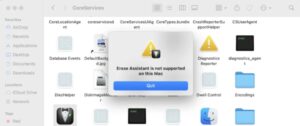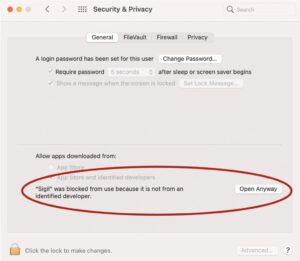Reinstalling an operating system can be a scary affair, and it is usually done after a complete cleaning of a machine or when software is creating problems. However, reinstalling Windows 10 without losing data is very achievable if you follow a few simple steps.
There are numerous reasons why you would want to reinstall Windows. But one of the key reasons is to remove unwanted garbage files that are slowing down your computer.
Sometimes, it is required to handle a situation that cannot be resolved any other way. Often, your greatest concern is what will happen to your data during the process.
Windows 10 includes a number of choices to help with this process, allowing customers to customize how their system is reinstalled based on their needs.
Fortunately, reinstalling Windows does not need you to delete all of your crucial files. We’ll show you how to reinstall Windows without losing your data. So, in today’s article, we will look at how to reinstall Windows 10 without losing data in simple steps. Let us begin.
It totally depends on the approach, but in most circumstances, you can keep files that you don’t want to lose during the installation. For example, if you reinstall Windows using an ISO file or the Media Creation Tool, you can choose to reinstall Windows without deleting any files.
However, some methods do not allow you to save your files. These methods will do a clean install, which will remove your data. Keep this in mind because you may only sometimes be able to use a technique that allows you to save your data. So, let us look at the steps on how to reinstall Windows 10 without losing data.
How to Make a Drive Backup
It’s a good idea to back up your data even if you decide to reinstall Windows without losing any files. By backing up your data, you can be sure that it is safe in the event of an emergency and expedite file recovery following a Windows factory reset.
We suggest using Backup and Restore to create a backup of your data. To make a backup, adhere to the following steps:
Step 1: Search for “Control Panel” by pressing WIN + S on your keyboard. Click the first result.

Step 2: Select the Backup and Restore option.

Step 3: Set up backup by clicking on Set up backup option.

Step 4: Choose a location for the backup and click Next.

Step 5: Click the Let Me Choose option and then click the Next button.

Step 6: Choose what data you want to back up, then click the Next button.

Step 7: Click on Save settings and run the backup now.

You can reinstall Windows with the assurance that your data is secure after making a backup.
To provide you with a variety of options, we’ve included steps for reinstalling Windows using a variety of techniques.
Note: A clean install will be necessary for some of these approaches. Thus, before moving forward, we advise backing up your data if you still need to do so.
Does Windows Reinstalling Delete Files?
If you’ve explored numerous fixes for system issues and none of them have actually worked, it could be time to completely reinstall Windows 10 to resolve all problems. Does this procedure, however, delete your crucial data? Is it possible to reinstall Windows 10 without losing any data?
Well, that depends on how you go about it:
You have the option to install Windows 10 with Repair Install, preserving all personal files, applications, and settings, preserving individual files exclusively, or maintaining nothing at all.
You have the option to reset Windows 10 completely or just your personal files by utilizing Reset This PC.
Your data won’t be erased if you perform a clean install without first formatting any existing partitions; instead, it will be installed and transferred to the Windows.old folder in the C: drive’s root directory.
In short, you absolutely can and have several options for reinstalling Windows 10 without losing data.
If you are confident that all of your files and apps are in good working order and have nothing to do with the difficulty you are experiencing, you can select a method to reinstall Windows 10 without losing files and programs.
To do this, Windows will scan your C: drive and save all of your personal data. When the installation is finished, Windows will restore these files and settings.
If you have an authentic version of Windows 10, the operating system will be allowed automatically following reinstallation.
How to Reinstall Windows 10 Without Losing Data
As previously stated, there are three options for reinstalling the system. After knowing the specifics, you can choose any of these approaches based on your individual needs. So, let us look at all the steps in detail.
Solution 1: Restore Windows 10 installation without losing any data
If your Windows 10 can boot, and you feel all of the installed programs are functional, you can reinstall Windows 10 without losing data or programs. If one or more of your programs are damaged, you should only keep personal files.
Step 1: Download the Windows Media Creation tool from microsoft.com and use it to create an installation ISO file.

Step 2: Double-click the ISO file to mount it (additional tools are required for Windows 7). Double-click the Setup.exe file in the root directory to launch it.

Step 3: Depending on your needs, you can choose to download updates or not when the Windows 10 Setup is complete.

Step 4: Click the “Change what to keep” option, which requires your attention screen.

Step 5: Then you’ll see the Choose What to Keep page, where you may select one of three options: “Keep personal files, apps, and Windows settings,” “Keep personal files only,” or “Nothing.” Select the first selection and press the Next button.

Step 6: You will be returned to the What needs your attention screen. Click “Refresh” after you’ve confirmed your choice.
This may take some time because scanning your hard disk and moving files takes time. If you want to keep your files where they are, consider the following procedure.
Solution 2: Installing Windows 10 Freshly without deleting personal files
The “Reset this PC” tool in Windows 10 might help you repair system problems by restoring your machine to factory settings. You have the option to keep your personal files or not during the procedure.
Step 1: Open Reset this PC from the computer or boot menu.
>> If the computer is still operational and bootable, navigate to Settings > Update & Security > Recovery > Reset this PC and select Get Started under the Reset this PC option.

You can make a recovery drive and boot from it if not. After that, click Troubleshoot > Reset this PC by pressing Enter after choosing your keyboard layout.

Step 2: After selecting Reset this PC, you will be provided with two options: “Keep my files” or “Remove everything.” Choose the first option. It will uninstall programs and settings but leave your personal files untouched.

Step 3: Then, under the Ready to Reset This PC window, it will show you all of the modifications that occurred during the procedure. Click “Reset” to confirm.
You can also use the command line to reset Windows 10. The steps are as follows:
Step 1: In the search bar, type “cmd” and hit Enter.
Step 2: Choose the “Run as Administrator” option by right-clicking on the Command Prompt in the results list.
Step 3: In the command prompt box, type one of the following commands, then hit Enter.
Step 4: Type systemreset to reset Windows 10 to its factory configuration.

Step 5: Enter systemreset -cleanpc to install Windows 10 along with its latest updates.

Solution 3: Reinstall Windows 10 without erasing any data
If you wish to install Windows 10 without losing data from a USB drive or installation disk, you can use this technique to upgrade Windows 10. Before you begin, ensure that your C: disk has more than 16GB of free space.
Step 1: Insert and boot from your installation disk. If you don’t have one, you can make one by downloading the Windows Media Creation tool.
Step 2: After it loads, choose your language and keyboard, then click “Next.”
Step 3: Press the “Install Now” button.
Step 4: Enter or skip your product key option. If you install the same version of Windows 10 as before, your computer will usually be activated automatically when connected to a network.
Step 5: Select “Custom” in the installation type.
Step 6: To continue, simply choose the C: drive and click Next on the next screen. After that, patiently wait for the installation to finish 100%.

Your data is transferred to a different location, but you will only lose it if you format the C: disk during setup.
After installation, the C: drive’s root directory includes the Windows.old folder. Here, all of your files are kept.
You can use Disk Cleanup to remove the Windows.old folder in order to make more disk space after moving all of the necessary files out of it.
Conclusion
Windows might require to be reinstalled occasionally. This can be accomplished in a number of ways. The majority of techniques help you maintain your data, preventing it from being erased. On the other hand, you should do a clean install for some methods.
Implementing the Reset PC option is the simplest way to reinstall Windows. This can be done by booting into WinRE or via the Settings menu. Alternatively, you can use the ISO file, the Media Creation Tool, to make a bootable USB or DVD, or you can use the network.
Make sure you have previously backed up your data. Also, ensure that you utilize data recovery software to retrieve any lost data if you are unable to make a backup.
Lastly, we hope you are cleared with all the steps on how to reinstall Windows 10 without losing data. This will help you with easy Windows installation without any errors. And, for such amazing solutions, stay connected with us.







